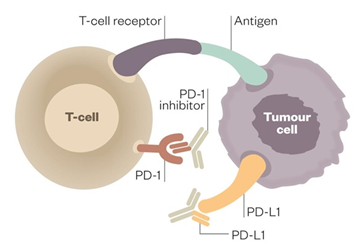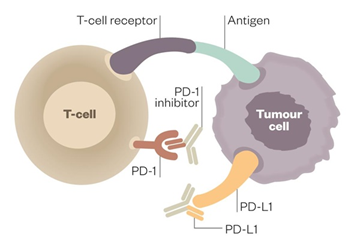Help
What are
checkpoint targets in cancer immunotherapy?
Immune checkpoint molecules can regulate immune
system function of human body. Immune checkpoint targets can be stimulatory or
inhibitory. Tumors can use these checkpoint targets to protect themselves from
immune system attacks. Currently approved checkpoint therapies block inhibitory
checkpoint receptors such as PD1 or CTLA4. Blockade of negative feedback
signaling to immune cells thus results in an enhanced immune response against
tumors.

References
& Credits:
1.
https://en.wikipedia.org/wiki/Immune_checkpoint
2.
The blockade of immune checkpoints in cancer
immunotherapy". Nature Reviews Cancer. 2012; 12 (4):
252–264.
What are
checkpoint inhibitors (modulators) in cancer immunotherapy?
Cancer cells can find ways to use immune checkpoints molecules
to avoid being attacked by the immune system. Immune checkpoint inhibitors (or
modulators) can help the body immune system recognize and attack cancer cells
via targeting the checkpoint molecules.

When
programmed-death receptor (PD-1) on the T cell binds to programmed death-ligand
1 (PD-L1) on the tumor cell, the T cell becomes deactivated, allowing the
cancer cell to evade immune attack.

Inhibitors of
programmed-death receptor (PD-1) and programmed death-ligand 1 (PD-L1) can
prevent the tumor cell from binding to PD-1, enabling the T cell to remain
active and co-ordinate an attack.
References
& Credits:
1.
The new era of immune checkpoint inhibitors. The
Pharmaceutical Journal. 2014; Nov 28.
How to use the CKTTD database?
In brief, the CKTTD database compiles checkpoint
targets and modulators (small-molecules and antibody) in cancer immunotherapy
with validated experimental evidences curated from literatures via an enhanced
text-mining system. The users can browse all the entities in the ‘Targets’ and
‘Modulators’ section of the front page.